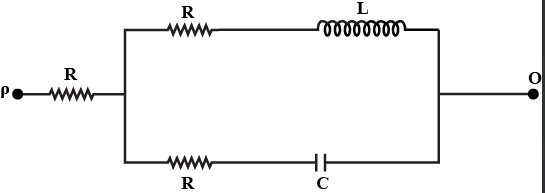When ultraviolet radiation is incident on a surface, no photoelectrons are emitted. If another beam causes photoelectrons to be emitted from the surface, it may consist of
(i) radio waves
(ii) infrared rays
(iii) X-rays
(iv) gamma rays
infra-red light
Visible light
X-rays
Micro-waves
The correct Answer is:C
Step by step video, text & image solution for When ultraviolet radiation is incident on a surface, no photoelectrons are emitted. If another beam causes photoelectrons to be emitted from the surface, it may consist of (i) radio waves (ii) infrared rays (iii) X-rays (iv) gamma rays by Physics experts to help you in doubts & scoring excellent marks in Class 12 exams.
Updated on:21/07/2023Topper's Solved these Questions
- ATOMSBOOK - AAKASH INSTITUTECHAPTER - ATOMSEXERCISE - ASSIGNMENT SECTION C Objective (More than one option is correct )
6 Videos
- ATOMSBOOK - AAKASH INSTITUTECHAPTER - ATOMSEXERCISE - ASSIGNMENT SECTION D (Linked Comprehension)
4 Videos
- ATOMSBOOK - AAKASH INSTITUTECHAPTER - ATOMSEXERCISE - ASSIGNMENT SECTION A Objective (One option is correct )
35 Videos
- ALTERNATING CURRENT BOOK - AAKASH INSTITUTECHAPTER - ALTERNATING CURRENT EXERCISE - Assignment (Section-J) (Aakash Chailengers Questions)
1 Video
- COMMUNICATION SYSTEMS BOOK - AAKASH INSTITUTECHAPTER - COMMUNICATION SYSTEMS EXERCISE - ASSIGNMENT SECTION D (Assertion-Reason)
10 Videos
Similar Questions
For a doubly ionised Li-atom
View SolutionIn a sample of hydrogen atoms, all the atoms exist in two energy levels A and B. A is the ground level and B is some higher energy level. These atoms absorb photons of energy 2.7 eV and attain a higher energy level C.After this, these atoms emit photons of six different energies. Some of these photon energies are higher than 2.7 eV, some equal to 2.7 eV and some are loss than 2.7 eV.
The principal quantum number corresponding to energy level C is
View SolutionThickness of the foil of gold used in α-particle scattering experiment is
View SolutionA voltage VAB=V0cosωt, whereV0 is a real amplitude, is applied between the points A and B in the network shown in figure. Given that
C=1ωR√3
and
L=R√3ω
(a) Calculate the total impedance between A and B.
(b) Verify that voltages of equal amplitude are developed between the point X and the points A, Y and Z.
(c) Determine the phases of these three voltages relative to VAB.

View SolutionSTATEMENT 1 : The audio frequency signals (20 Hz to 20 kHz) cannot be transmitted without distortion over long distances
STATEMENT-2: Noise has its greatest effect when the signal is weak
View SolutionGive one use of each of the following: (i) Infrared rays (ii) Gamma rays (iii) microwaves (iv) Ultraviolet rays.
View SolutionWhich of the following are high-enegry radiations?
(i) Ultraviolet rays (ii) Infrared rays
(iii) X rays (iv) γ rays
View SolutionWhen ultraviolet radiation is incident on a surface, no photoelectrons are emitted. If another beam causes photoelectrons to be emitted from the surface, it may consist of
(i) radio waves
(ii) infrared rays
(iii) X-rays
(iv) gamma rays
View Solutionगमा-किरणों, रेडिओ तरंगो, अवरक्त विकिरण, पीला प्रकाश, नीला प्रकाश, पराबैंगनी किरणों तथा एक्स-किरणों को तरंगदैध्ये के घटते क्रम में लिखिए!
View Solutionनिम्नलिखित में कौन-सा विधुतचुंबकीय नहीं है ? क्यों ?
अवरक्त किरणे, पराबैंगनी किरणे, रेडियो तरंगे, ध्वनि तरंगे, गामा-किरणे, X-किरणे ।
View Solutionनिम्न में से कौन- सा विकिरण - (i ) उष्मीय विकिरण ,(ii ) दूरसंचार हेतु प्रयुक्त होते है अवरक्त किरणों , गामा किरणे , पराबैगनी किरणे , माइक्रो तरंगे
View SolutionWhen light is incident on a surface, photoelectrons are emitted. For photoelectrons,
View SolutionWhen ultraviolet radiation is incident on a surface , no photoelectrons are emitted If a second beam causes photoelectrons to be ejected, it may consist of
View Solutionनिम्न में से वे वैद्युतचुम्बकीय तरंगें पहचानें जिनकी आवृत्ति (a) अधिकतम और (b) न्यूनतम है:
(i) रेडियो तरंगें, (ii) गामा-किरणें, (iii) दृश्य प्रकाश, (iv) सूक्ष्म तरंगें, (v) पराबैंगनी किरणें और (vi) अवरक्त किरणें।
View SolutionWhen light is incident on a surface, photoelectrons are emitted. For photoelectrons,
View SolutionWhat is the cause of "Green house effect"? (a) Infrared rays (b) Ultraviolet rays (c) X-rays (d) Radio-waves
View Solution
